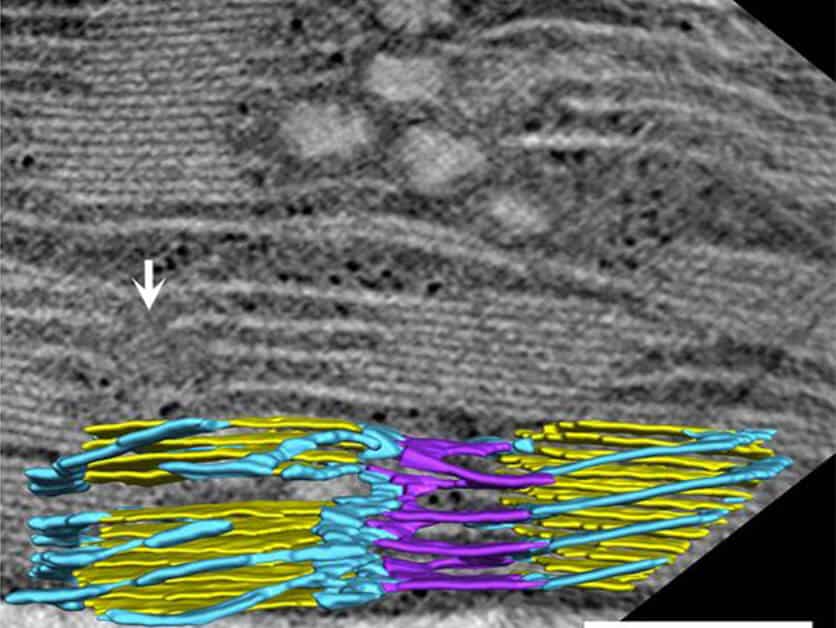How parking lot-like structures are organized that are used to transport substances within the cell

To plan a multi-story parking lot, one must first understand the maximum number of cars that can be crammed into as small a space as possible, while ensuring free movement between the different floors. Garage-like structures in plant and animal cells have a similar function: they are built as thin, flat layers, connected by means of helical "ramps", which allow the free movement of molecules and the transfer of various substances. In human cells, for example, these structures assist in the movement required to produce proteins and fold them. In plant cells, they store the materials necessary for photosynthesis.
moving ramps
The ramps in the parking lots are cast in concrete and fixed in place. But because biological parking lots are composed of soft membranes, the resulting ramps are able to move and reposition themselves as needed. Subtle forces determine the movement of biological ramps, but to understand these forces, one must first decipher their geometric structure. In a new study recently published, Dr. Efi Efrati And the post-doctoral research student Dr. Louise de Silva, from the Department of Physics of Complex Systems at the Weizmann Institute of Science, discovered that there are no appropriate mathematical tools to describe the phenomenon - therefore, they developed new tools themselves.
Dr. Efrati has been collaborating for several years with Prof. Ziv Reich, from the Department of Biomolecular Sciences, in research that deals with garage-like structures called thylakoids. In these structures, found in plant cells and green algae cells, part of the photosynthesis process takes place. The structure of the thylakoids allows them to compress a lot of surface area into a small space.
A reconstruction of the structure of the thylakoids, which Prof. Reich's research group carried out using an electron microscope, showed that the thylakoids are organized into minimal surfaces - surfaces that are created in biological systems, and also exist in artificial structures, that extend over the smallest space within a given boundary. The scientists even discovered that the ramps in these buildings are able to curve to the left or right, at different angles. The existing physical tools made it possible to describe the slope of the slope, but in order to understand the way in which the various buildings are located in space, and what determines the relationship between the slope and the diameter of the ramp, the scientists had to develop new - more accurate - tools.
The most studied surface in the world of mathematics
Minimal surfaces were first discovered in the 18th century and are, apparently, the most studied type of surface in the world of mathematics. The best way to arrange a minimal surface using a spiral ramp, for example, has been known for 250 years. At the same time, building a minimal surface reminiscent of the twisted geometric shape of thylakoid is a completely different story. "As physicists, we have a tendency to use approximations," says Dr. Efrati. "We started with designing a system that was based on a common mathematical approximation for calculating minimal surfaces." The approximation allowed them to place spiral motifs arbitrarily and build complex geometric "car parks", but the resulting structures did not fall under the definition of minimal surfaces. "We discovered that the approximations are only suitable when the buildings are far from each other."
Instead of starting from scratch, Dr. Da Silva and Dr. Efrati tried to find a way to correct the approximation. "The result looked as we wanted, but with subtle differences, so we used it as a starting point for the calculations we performed." Finally, the scientists found the solution: a trick that takes into account the approximation of the entire surface and its spiral ramps, then separately calculates the curvature of each and every point on the surface. The result obtained was a precise minimal surface with the desired helical structures embedded in it.
In addition to the fact that the model developed by Dr. Efrati and Dr. de Silva enables the precise construction of a minimal surface with complex geometric characteristics, it will also allow biologists to perform a quantitative analysis of cell organelles. Since parking garage-like structures of this type are found in many biological systems, the new research makes it possible to better understand the structure of important organelles in cells such as the thylakoid, and may even make it possible to design synthetic microscopic structures with similar characteristics.
More of the topic in Hayadan:
